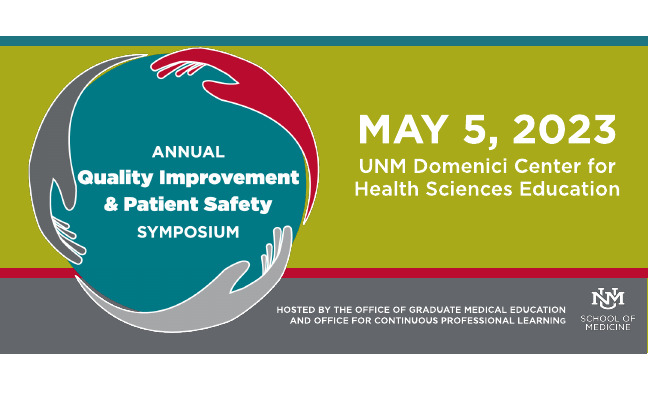Document Type
Poster
Publication Date
3-6-2020
Abstract
Introduction
Nationwide, cancer centers experience challenges with infusion center efficiency while maintaining high safety standards, with some patients facing wait times as long as 102 minutes1. This leads to decreased patient satisfaction and inability to provide optimal care. Lack of standardization among cancer centers results in a wide variation of infusion wait times for patients. In this study, we initiated five interventions at UNM Comprehensive Cancer Center to reduce the wait times for our patients and optimize workflow of the Infusion suite
Materials and Methods
A multidisciplinary working group was formed consisting of the infusion floor physician lead, nurse lead, pharmacy lead, analytics and process improvement leads. Beginning in May 2019, the following efficiency efforts were implemented:
1. Pharmacists correctly sequenced chemotherapy orders based on the time and length of each infusion
2. Pre-medications were loaded into a medication dispensing system called Pyxis to facilitate easier and quicker access for nurses
3. Chemotherapy preparation was completed in advance of patient arrival to infusion suite
4. A “pharmacy technician runner” was hired to deliver drugs instead of the on-duty pharmacist
5. New system implemented to classify patients as “Ready-to-Treat,” signaling a patient as clinically appropriate for chemotherapy – improving pre-preparation of chemotherapy treatment
The efficacy of the efforts implemented were quantified by the reduction in wait times and infusion times. In addition, Press Ganey scores were charted to evaluate patient satisfaction.
Results
Prospective wait time data was gathered throughout May 2019 using the real time data available in EMR. Wait times were analyzed for each deficiency group identified.
- By having pharmacists correctly sequence chemotherapy orders, we were able to see an increase in precision from 34% to 83% and a significant decrease in poor sequencing from 37% to 11%.
- By loading Pre-medications into Pyxis, we saw a decrease in dispense time from 20 to 8 minutes.
- Pre-making chemotherapy was not successful; it resulted in wasted drug material. However, pre-approving selected injections resulted in a decrease in injection wait times by 8.5 minutes.
- Hiring a “runner technician” allowed faster medication deliveries, decreased waiting times for patients, and reduced the number of unwanted breaks in workflow for the pharmacists.
- Our results led to the development of the ”Ready-to-Treat” process, reducing the patient’s total wait time for receiving their first infusion from 79 to 60 minutes.
- Press Ganey patient wait time satisfaction scores improved to consistently above 84.
Conclusions
After implementing the efficiency efforts, we were able to see an increase in the precision of chemotherapy orders, a decrease in the time needed to dispense pre-medications after a patient was “Ready-to-Treat,” and a decrease in the time it took for a patient to receive his or her first infusion. Overall this resulted in improved satisfaction scores from our patients.
Reference
1. Sugalski, et al. “National Comprehensive Cancer Network Infusion Efficiency Workgroup Study: Optimizing Patient Flow in Infusion Centers.” Journal of Oncology Practice (2019):30964732
Recommended Citation
Sasankan, Shenthol; Zoneddy Dayao; Bernard Tawfik; Andrea Cox; Candy Okino; Sandra Peacock; Janet Abernathy; Branda Chaleunphonh; Ron Kittson; Nick Crozier; Richard Lauer; and Neda Hashemi. "Stop testing the patience of our patients – Optimizing workflow at a Cancer Center Infusion Suite." (2020). https://digitalrepository.unm.edu/hsc_qips/16


Comments
Presented at the University of New Mexico Health Science 2020 Annual Quality Improvement and Patient Safety Symposium